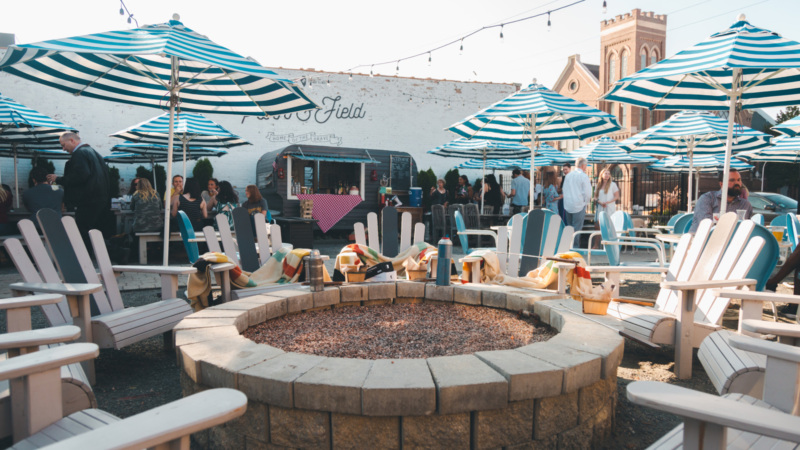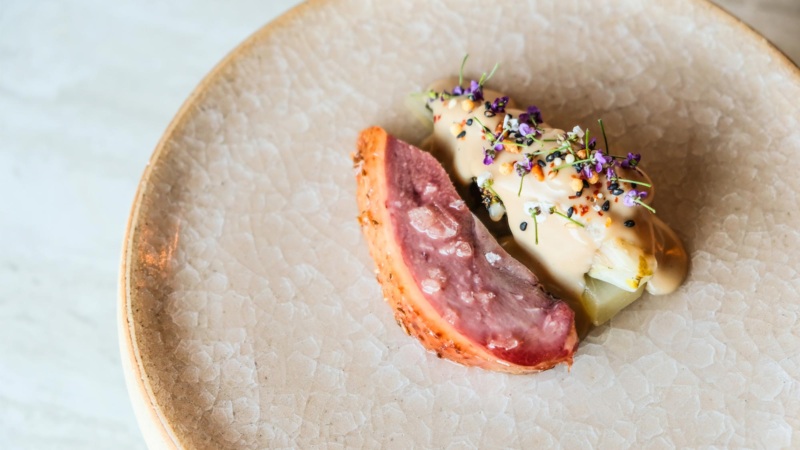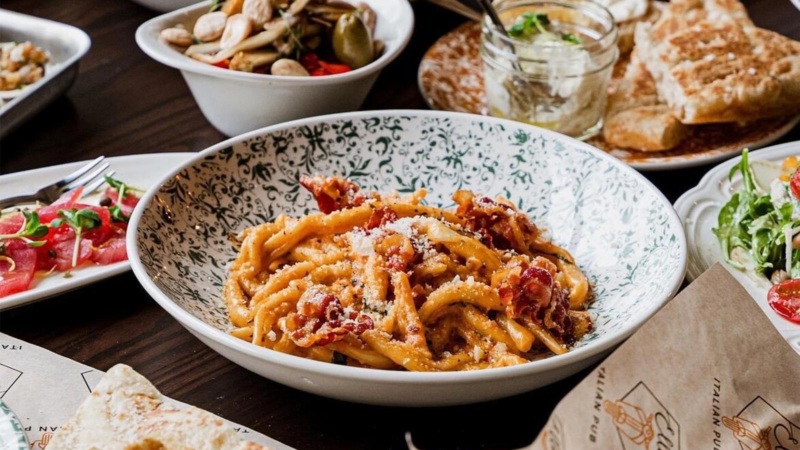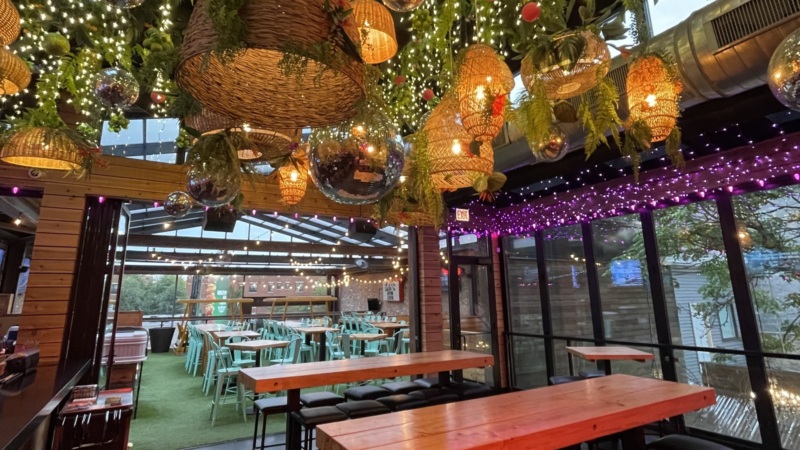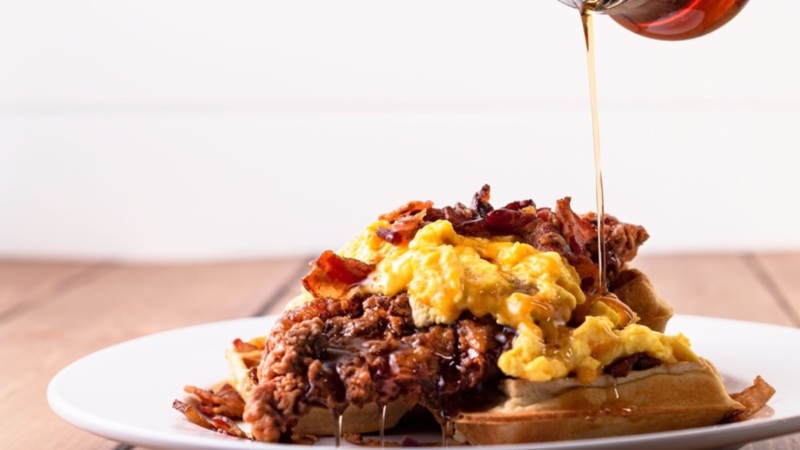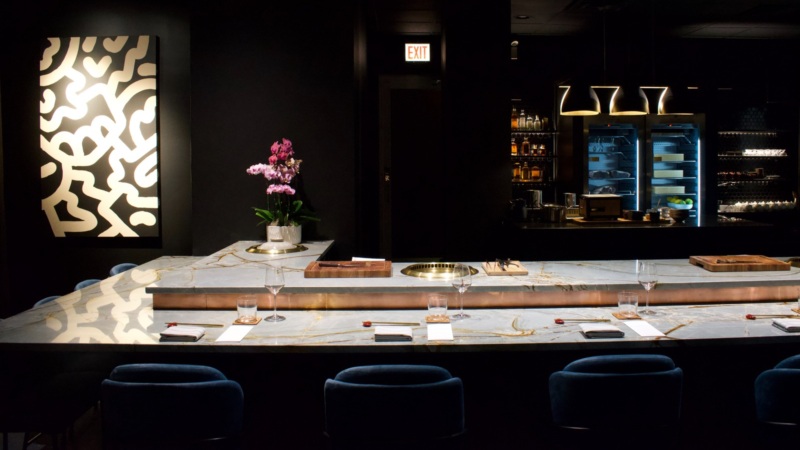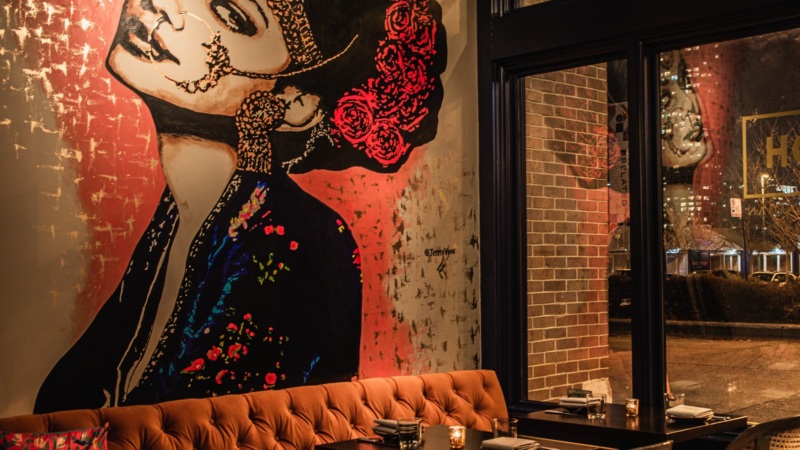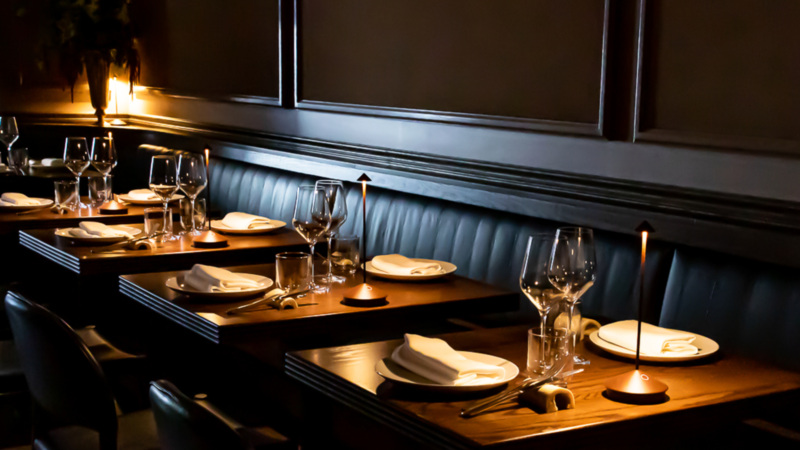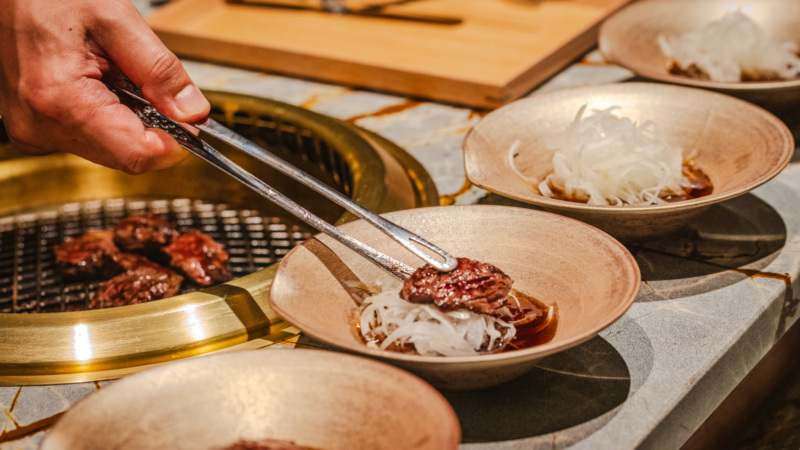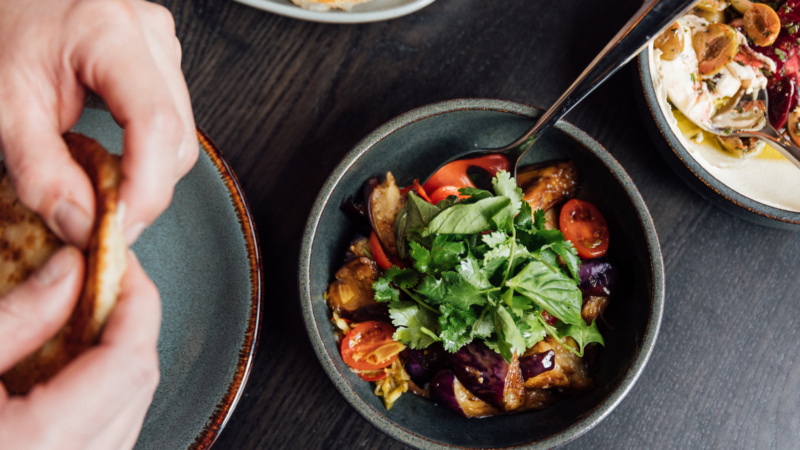
Forbidden Root Brewery Makes Chicago’s Most Creative Beers. Here’s How — and Why.
At Forbidden Root, there’s an undeniable reverence for beer. At every step — from sourcing and combining botanic ingredients to brewing new concoctions — the mad scientists who run the joint have an unwavering commitment to detail, creativity, and collaboration.
Founder and managing partner Robert Finkel is responsible for procuring much of what fills the brew kettle and travels far and wide to gather the eccentric ingredients that set their beers apart, earning him the distinctive title of “Rootmaster.”
From the beginning, Finkel and the rest of the team created beers that are complex, but also approachable. “They made sure that there were options for everyone, and didn’t assume that everybody loves beer just because they were in the taproom,” says general manager Bryan Krajack.
In addition to churning out fresh beers each week, Forbidden Root also offers food, hosts pairing events, crafts in-house tonics and elixirs, and upholds a commitment to charity — a cornerstone of their business model. Oh, and they’ve also expanded to three locations — two in Chicago and one in Columbus, Ohio.
We sat down with Finkel and Krajack to discuss the evolution of the brewery and hear more about what it takes to craft their unique botanic beers.
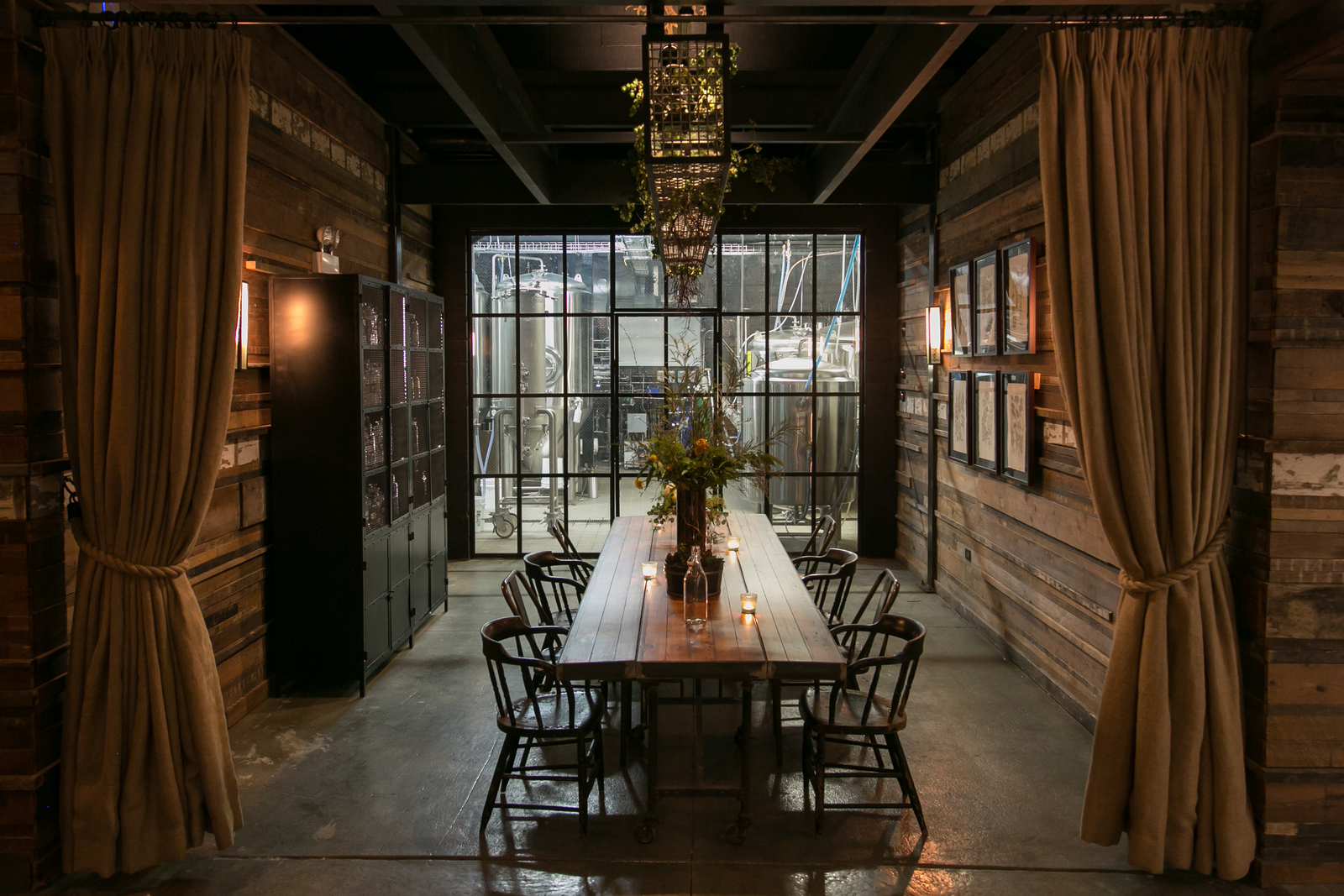
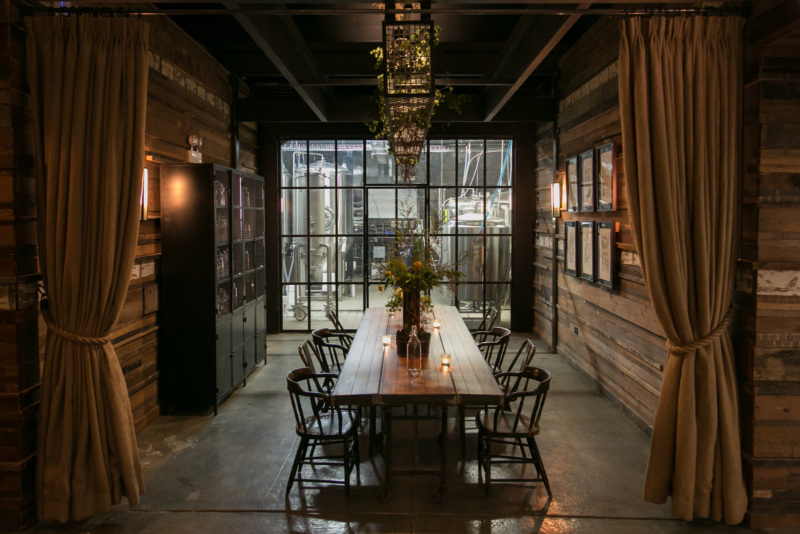
Resy: What were you doing before you were in the beer business?
Robert Finkel: Well, I was a venture capitalist in a previous life. A partner of mine had been an early adopter of craft beer 20 years ago. He turned me onto beer and we used to do a 300-person event for six years running. I came to appreciate the breadth and depth of what craft beer could be. At that point I had this concept for a root beer beer, and it was eating away at me. I wanted to know where it came from, what it looked like, and what it tastes like. And so I spent some time developing a root beer beer that wasn’t sweet with Randy Moser, who is a partner and the alchemist here at Forbidden Root. That was our very first product seven-plus years ago.
Brian, what about you? What were you doing before you got to Forbidden Root?
Brian Krajack: I’ve been working in the restaurant industry my whole life. I knew when I was 16 this was what I wanted to do. About 10 years ago, I really got into craft beer and started going to events and festivals. When Forbidden Root opened, I went there more than any other brewery and became friends with all the staff. About a year into its opening, one of their friends reached out and asked if I had an interest in coming on the operation side and leading the taproom. It’s funny because I didn’t want to admit to everyone when I first took the interview how badly I wanted it. I was in love with their vibe. That was five years ago, and it’s been a fun ride since.
Finkel: By the way, just to add, I’m kind of a pain when it comes to selecting people. But when we interviewed Brian, who was our first interview, we said, “okay, tell all the other people that we’re canceling the search.” It was one and done.
That must be nice to hear, Brian!
Krajack: Definitely. I mean, I kind of knew, because the first interview was four hours.
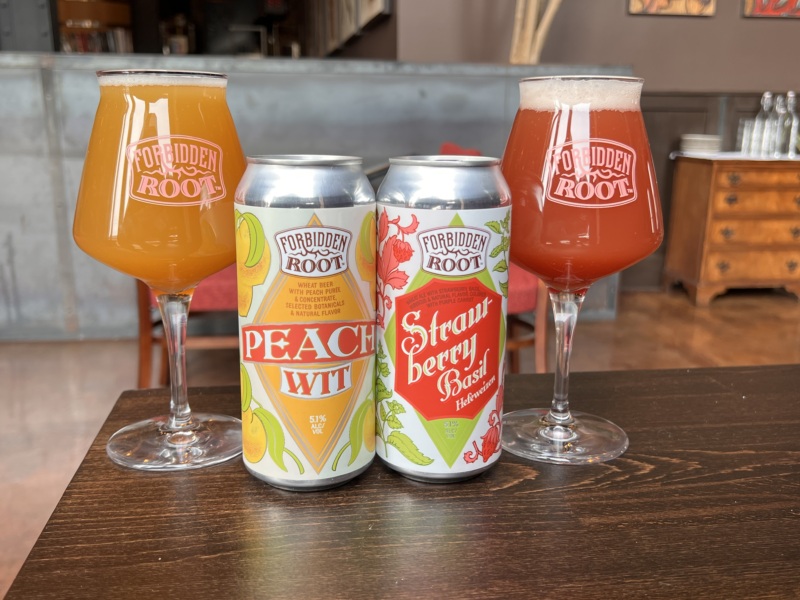

What were the early days like?
Finkel: I came to appreciate that opening up a venue and designing every square inch is kind of like whittling a stick. The stick tells you. If you’re listening and you’re watching, the venue tells you where to go. We wanted to preserve the beauty of what was there, which was the Hub Theatre. I preserved the mosaic tiles, and I actually got pictures of the old theater and put them up so people can see what it was in its glory days. We exposed the brick and the beautiful molding, lowered the ceiling, and took advantage of the old projection room which we made into the “Rootmaster” area. If you’re listening, you can create a plan while you go, as opposed to having a plan and coming in and just destroying everything.
I was inspired by the Scandinavian term “hygge,” which means a welcoming and inviting feeling. I wanted every aspect of Forbidden Root to have that feeling. Craft beer is all about connecting to people, and connecting to ingredients in the ground and nature. We wanted a definitive vibe to explain our philosophy and approach to food, beer, and service. It’s certainly not a sports bar.
What’s behind the enigmatic name?
Finkel: Naming can be fun, but whenever you really want it, it becomes work. And we just couldn’t come up with a name that we loved. We liked “root” because it got to what we wanted to use as our canvas for the art. That is to say, brewing with hops started about 800 years ago, and brewing with botanical ingredients started 10,000 years ago. To create botanic brews, people used to forage locally for whatever natural botanic ingredients were there whether it’s in Europe or South America or North America. So we took inspiration from that bigger idea. We wanted to make the name sound not too sexy, but intriguing. Make people wonder, “what is it?”
In my mind, especially in a community like craft beer, you better add to the community … I’m not there because I want to brew beer. I’m there because I think I have something different and better to offer.— Robert Finkel
When you launched in 2016 the idea of botanical brewing felt radical – do you see an evolution in the way that the public and other brewers have reacted to that idea?
Finkel: When we started, we felt that an entrepreneurial step was a very arrogant statement. It’s saying, “I know something better than anybody else and I have a reason to exist.” And so in my mind, especially in a community like craft beer, you better add to the community.
I’m not there because I want to brew beer. I’m there because I think I have something different and better to offer. You make a statement that you think your art is worthy. We kind of view it that way.
Krajack: It wasn’t that botanics specifically was new. But we were definitely at the front of doing something newer like this and trying to come up with combinations of flavors and profiles that were nuanced. We wanted to give it a chef’s kiss, in a way. For example, Money On My Rind was our gin and juice beer, and getting the botanics right on that was really fun. We also had this beer called Strawberry Basil Hefeweizen which was a summer release. It was continually popular, and it was the number one beer bought in the tap room. From the idea through execution, I think that this beer was one of our best. The really fun thing about beer is that the people do end up telling you what they want.
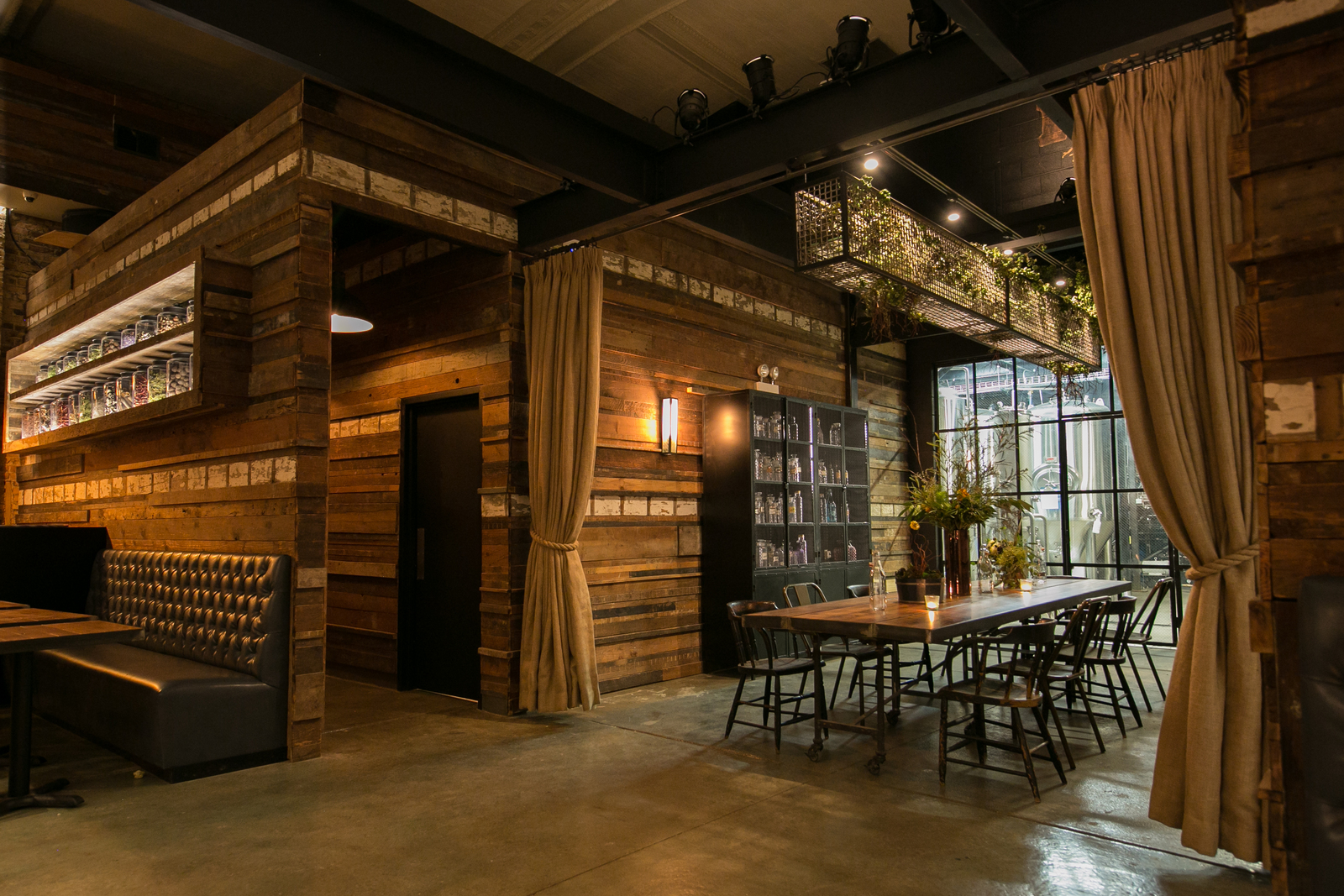
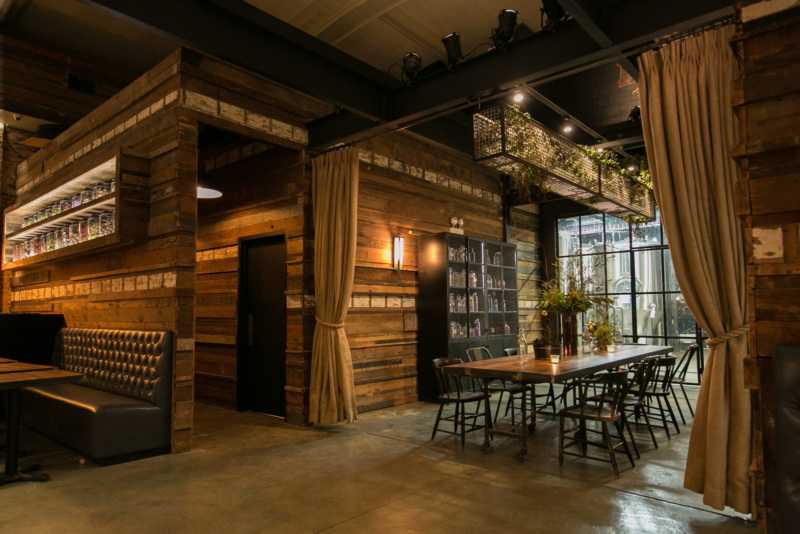
Can you talk about the beginning of that creative process when you’re first deciding to brew something new? There seems to be a lot of hands that go into it.
Finkel: Yes, it’s a very collaborative group. We meet once a week and ideas can come from anywhere. They can come from the restaurant, they come from the brewer, they come from Randy, they can come from me. And so in a creative process you want to encourage a culture of standardized communication where everyone’s comfortable communicating and giving ideas. To be creative, you have to get the best out of everybody. When you’re just throwing spaghetti against the wall, some ideas are really crazy.
What’s an example of a crazy idea that worked — or some sticky spaghetti?
Finkel: Four or five years ago, Randy came up with a U.S. native grape beer. So we tried 14 different varieties of grapes before we set on Niagras. So I called Welch’s, which is the largest grape co-op in the world. They didn’t call me back, but I saw them at a very geeky international flavor technology show that no brewers go to, but I love it. The Welch’s ingredient booth was there and I discovered that they were the largest grower in Niagara, New York. I told them that in 1954 my dad was head of marketing for Welch’s grape juice and that he invented the jelly jar that had the imprint of the How Dee Do Dee character that kids loved. Apparently my dad’s product was in Welch’s Hall of Fame, and they ended up getting me juice in two days.
So that’s a good illustration of how we do things. We have an idea and then we very methodically source and test and get it to where we think is good. Then we put it out in the pub, where people try it, and we get feedback. Once we get some experience making the beer, we’ll improve it regardless of whether the consumer is watching or not. It’s for us. If we’ve got it 90% right, we’ll still get the 10% for our own palates, even if it’s unrecognizable to anybody else.
If you’re coming up with a new product, and you’re nobody, but your product is pretty cool, you’re gonna get an open hearing in Chicago. That’s what I really liked about the beer scene here.— Robert Finkel
What have been some of your favorite creations over the years?
Finkel: One of my favorite beers was an amaro beer which was based on a mistake. We had a backlog of all these cool flavors we wanted to use and one of them was dried cherry stems, which they use in the Middle East to make tea. We made a beer with the stems, but it became overly bitter because we didn’t realize how efficient our system was. So we had this tank of interesting but too-bitter cherry stem beer. We also simultaneously had been creating these elixirs to pour into beers. And so Randy took our roasted blood orange syrup, and put it in the overly bitter cherry stem beer, mixed it around and then said “try this.” And it was awesome. We called it Cherrytree Amaro.
We also made a fernet beer called Frenetic. For the 1% of people who are fernet drinkers, it’s a cultural phenomenon. It’s a very devoted group. I remember that we sold out in an hour and a half and people were crying. There was this man from Brazil who had tears in his eyes, and I actually went back into my own stash and gave it to him.
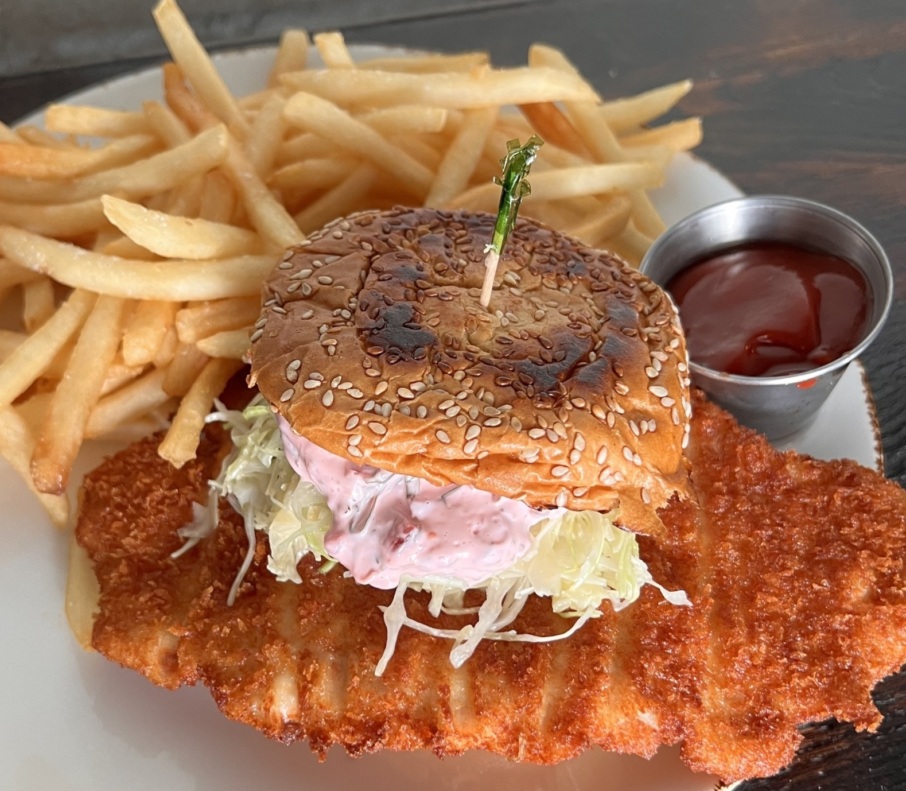
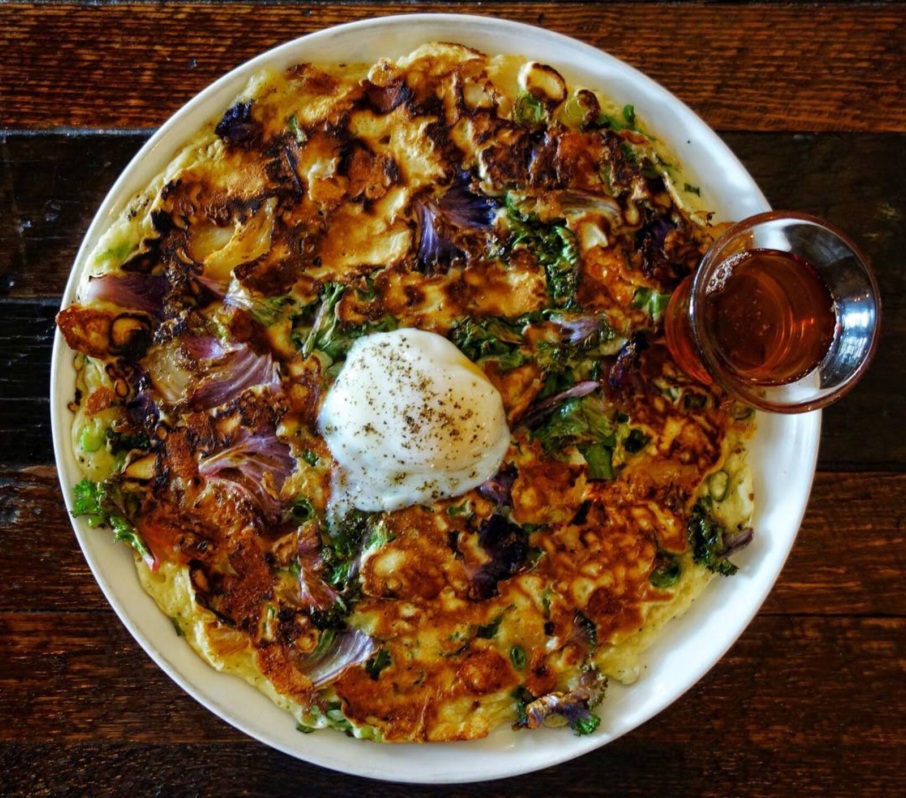
How do you approach crafting the food menu alongside the beer? It seems that from the beginning, there’s been a real focus on your beer playing well with food.
Krajack: Yes, our beer and food pairings have been around since we started. We have a brewer that’s certified in beer and food pairing and Randy’s talents really come into play here. When we have a dish, we keep track of which beers go the best with that dish. The real fun is when we do our beer and food pairing events. We’ve done them with cheese and beer, desserts and beer, and even a vegan menu and beer.
How often do you have a new batch of beers coming in?
Krajack: Once a month. That’s the goal we strive for. We like to keep it really fresh.
Finkel: And there’s probably two new beers every week.
How many people are in the brewery working on these concoctions on any given day?
Krajack: Between the brew team, we have five total people. But again, it’s really collaborative. The chefs help out quite a bit. I actually tagged the chef and said that we’re looking to create a super fresh and fun combo, and he came up with red ruby grapefruit and mint blend. The mint was steeped in grapefruit juice for two days and then we put it into the golden ale beer and that’s tapping today. So the root team obviously is the lead, but all the staff are encouraged to speak up on what they think could work.
It seems that an important part of your ethos as a business is supporting good causes and giving back to charitable organizations. How has this mission shaped your relationship with the community and with Chicago?
Finkel: We are actually formed as a benefit corporation. So in our charter, doing good has equal weight to making money. It’s part of the craft beer ethos to be community-oriented. But even within that context, we support a lot of different charities, whether it’s local schools or beekeeping. We have a long list and those are things that we like doing.
If you remember that viral video of the woman in Ukraine who went up to the Russian soldier with a handful of seeds and put it in his hand and said, “please put this in your pockets so that when you die at least sunflowers will grow.” It was the most badass statement. The most recent thing we’ve done is partner with a seed packet vendor who donated sunflower seeds for us to sell in support of Ukrainian refugees. Our West Town Pub is in Ukrainian Village effectively, so we felt that this was just as much a local cause as it was an international one.
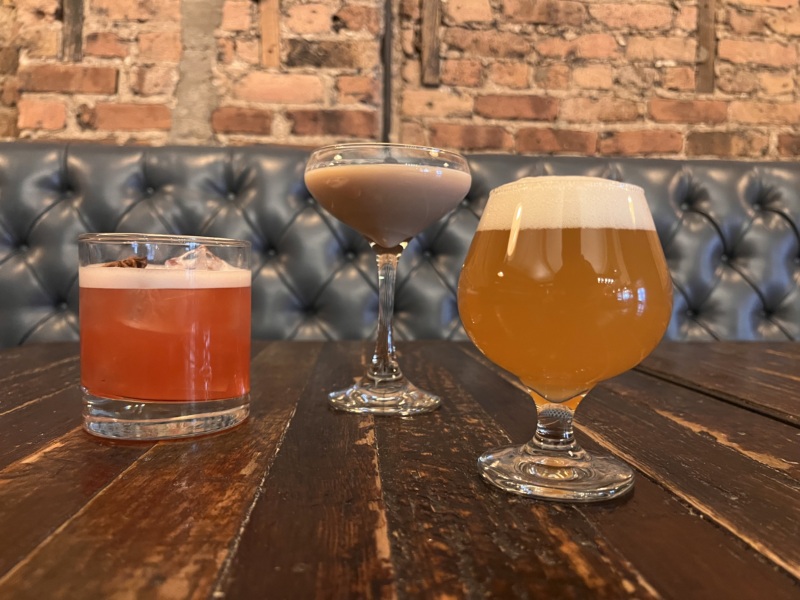

What makes Chicago a special place for beer and for your mission?
Krajack: This is where we live. This is where we’re from. And the location that we originally opened was in an area that needed something new. We have a lot to offer in plenty of areas, but Chicago has a “work hard from the ground” attitude, and that’s the mentality we have at Forbidden Root.
Finkel: Chicago is a particularly good place to launch a new product, because it’s a very open-minded meritocratic culture. I was raised in the fashion business and so I know the power of a dominant brand. And god bless Chicago, because those brands don’t mean as much here as they mean in other places. If you’re coming up with a new product, and you’re nobody, but your product is pretty cool, you’re gonna get an open hearing in Chicago. That’s what I really liked about the beer scene here. If you come up with something great, nobody’s going to say “Who are you? I only buy Hermès bags.” Everyone gets a very fair shot. Whatever brand we’ve built, it’s because people trust what we do.
What’s a typical day like for you two?
Krajack: I’ll just go into what I had going on today. This morning I looked at product mixes, wrote some emails, and I had a few Zoom meetings scheduled. One to talk about distribution, one with Robert and Randy, and another was an interview for a sous chef opening.
So it can be all-inclusive, touching all aspects of the business like today. And then it can also be being in the pub, like I was on Saturday. I was there from 10:00 a.m. until 4:00 p.m., just talking with guests and enjoying our staff.
Finkel: As the Rootmaster, I do a lot of procurement and come up with new ideas for new things. But Brian’s the guy who’s running the venues.
Which begs the question: what exactly is a Rootmaster?
Finkel: Well, it’s a very involved certification and involves multiple steps of higher education [laughs]. I’m involved in looking for new ideas and ingredients. Whenever I travel, I go to the markets and I’m mining for spices. Once, Randy had an idea for an oatmeal raisin cookie beer, and when we knew that chocolate boba would be a good ingredient for it, the entire team looked right at me. They know that I’m the guy that will look under every rock to find it. Because I am the Rootmaster.
Elanor Bock is a Chicago-born professional writer, dancer, and Renaissance woman. Follow her on Instagram. Follow Resy, too.


